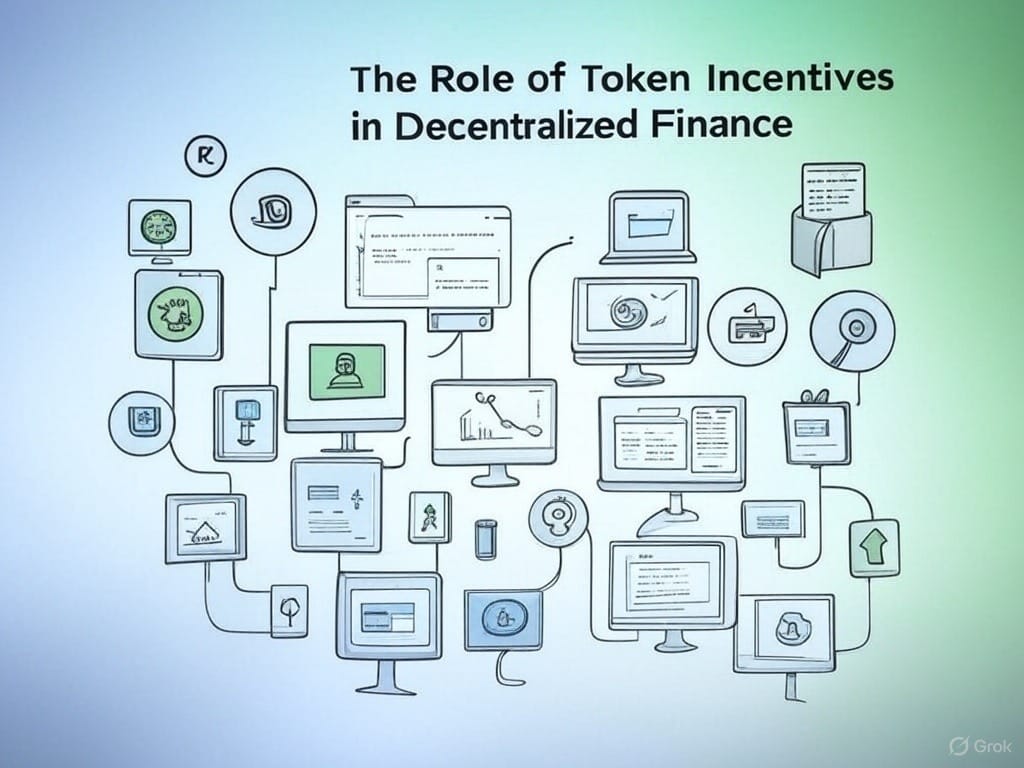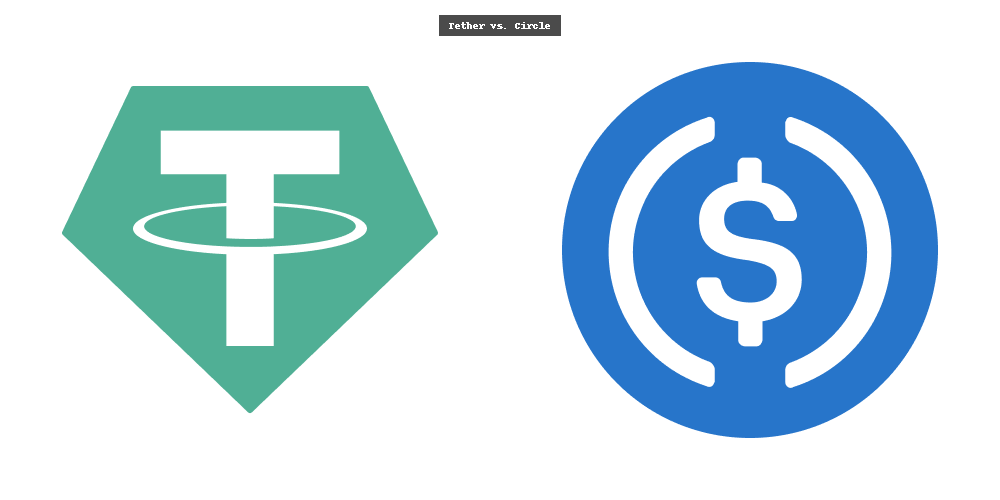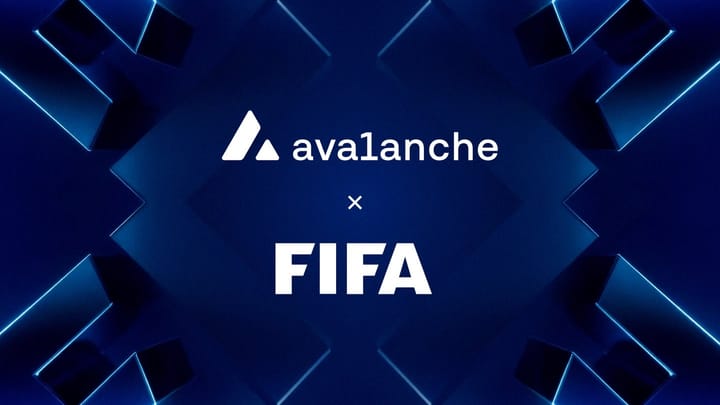The Role of Token Incentives in Decentralized Finance

The Starting Point 🏁
Decentralized Finance (DeFi) has emerged as one of the most transformative applications of blockchain technology, reshaping how financial systems operate by removing intermediaries and enabling peer-to-peer transactions. At the heart of DeFi’s meteoric rise lies a critical mechanism: token incentives. These digital rewards, often in the form of native tokens, are used to encourage user participation, secure networks, and align stakeholder interests. But why are token incentives so integral to DeFi, and what makes them indispensable in this ecosystem?
In this article, I’ll be exploring the multifaceted role of token incentives, their benefits, challenges, and their broader implications for the future of finance.
Understanding Token Incentives in DeFi 💸
Token incentives are rewards issued to participants in a DeFi protocol for performing specific actions, such as providing liquidity, staking assets, or participating in governance. These tokens are typically native to the protocol (e.g., UNI for Uniswap or COMP for Compound) and serve both as a utility within the ecosystem and as a speculative asset. Unlike traditional financial systems, where incentives might include interest rates or loyalty points, DeFi leverages tokens to create decentralized, trustless systems that operate without central authorities. This whole concept draws from game theory and behavioral economics, incentivizing rational actors to contribute to the network’s success. By rewarding users for actions that enhance the protocol’s functionality, token incentives create a self-sustaining ecosystem where individual and collective goals align. But their importance extends beyond simple rewards—they are the backbone of DeFi’s operational and economic models.
Some of the roles of incentives in defi include:
▪︎ Bootstrapping Network Effects One of the primary reasons DeFi protocols rely on token incentives is to bootstrap network effects. In the early stages, a protocol needs users to achieve liquidity, security, and adoption. For example, decentralized exchanges (DEXs) like Uniswap require liquidity providers (LPs) to deposit assets into pools to facilitate trading. Without sufficient liquidity, trading becomes inefficient, leading to high slippage and poor user experience.
Token incentives solve this problem by rewarding early adopters. LPs who deposit assets into a pool receive tokens, which may appreciate in value as the protocol grows. This creates a compelling reason for users to participate, even in a protocol’s developing stages. For instance, when SushiSwap launched in 2020, it offered generous SUSHI token rewards to attract liquidity providers, quickly amassing billions in total value locked (TVL). This demonstrates how incentives can catalyze adoption and create a virtuous cycle: more users attract more activity, which enhances the protocol’s utility and draws in additional participants.
▪︎ Aligning Stakeholder Interests DeFi protocols operate without centralized control, relying on distributed networks of users, developers, and validators. Token incentives align the interests of these diverse stakeholders, ensuring the protocol’s long-term sustainability. For example, governance tokens like AAVE or MKR grant holders voting rights, allowing them to influence protocol upgrades, fee structures, or risk parameters. By tying decision-making power to token ownership, DeFi protocols incentivize holders to act in the network’s best interest.
This alignment is particularly evident in proof-of-stake (PoS) systems, where token holders stake assets to secure the network. In return, they earn rewards, but they also risk losing their stake if they act maliciously. This dual mechanism of reward and penalty ensures that participants are motivated to maintain network integrity. For instance, protocols like Curve Finance use token incentives to encourage long-term commitment from liquidity providers, reducing the risk of sudden withdrawals that could destabilize the system.
▪︎Enhancing Security and Decentralization
Security is paramount in DeFi, where hacks and exploits have cost billions. Token incentives play a critical role in securing protocols by incentivizing behaviors that enhance resilience. In PoS-based DeFi systems, validators or node operators are rewarded for processing transactions honestly. If they attempt to manipulate the system, they face slashing penalties, where a portion of their staked tokens is confiscated. This economic deterrent ensures that participants prioritize network security.
Moreover, token incentives promote decentralization by distributing ownership widely. Unlike traditional finance, where control is concentrated among a few institutions, DeFi protocols use airdrops and rewards to distribute tokens to early users, developers, and community members. For example, Uniswap’s 2020 airdrop distributed UNI tokens to users who had interacted with the protocol, fostering a sense of ownership and encouraging community-driven governance. This decentralization reduces the risk of single points of failure and enhances the protocol’s resilience against censorship or regulatory overreach.
▪︎Driving User Engagement and Innovation
Token incentives are a powerful tool for driving user engagement. By rewarding actions like trading, borrowing, or referring new users, protocols create a dynamic ecosystem where participants are motivated to explore new features. This gamification of finance has led to unprecedented levels of user activity, with DeFi protocols often outpacing their centralized counterparts in transaction volume.
Furthermore, token incentives fuel innovation by attracting developers to build on DeFi platforms. Many protocols offer grants or bounties in their native tokens to developers who create new tools, integrations, or smart contracts. This has led to a Cambrian explosion of DeFi applications, from yield aggregators like Yearn.Finance to synthetic asset platforms like Synthetix. By incentivizing creativity, tokens ensure that DeFi remains a hotbed of experimentation and progress.
▪︎Addressing Challenges and Risks While token incentives are a cornerstone of DeFi, they are not without challenges. One major issue is the risk of over-incentivization, where protocols offer unsustainable rewards to attract users. This can lead to “yield farming” frenzies, where users chase high returns without regard for the protocol’s fundamentals, often resulting in volatility or collapse. The 2020 DeFi boom saw numerous projects launch with inflated token rewards, only to crash when incentives dried up or vulnerabilities were exploited.
Another concern is token concentration. Despite the goal of decentralization, many governance tokens end up in the hands of a few large holders, or “whales,” who can disproportionately influence protocol decisions. This undermines the democratic ethos of DeFi and raises questions about fairness. Protocols must carefully design token distribution mechanisms to avoid such outcomes, balancing incentives with equitable access.
Regulatory uncertainty also looms large. Token incentives, particularly airdrops, may be classified as securities in some jurisdictions, exposing protocols to legal risks. As regulators scrutinize DeFi, projects must navigate complex compliance landscapes while preserving their decentralized nature.
The Future of Token Incentives in DeFi
As DeFi matures, the role of token incentives will continue to evolve. Protocols are exploring more sustainable models, such as veTokenomics (vote-escrowed tokens), where users lock tokens for extended periods to earn higher rewards and governance power. This encourages long-term commitment and reduces speculative behavior. Curve Finance’s veCRV model, for example, has been widely adopted, inspiring similar systems across the ecosystem.
Additionally, advancements in layer-2 scaling solutions and cross-chain interoperability are expanding the scope of token incentives. Protocols can now reward users across multiple blockchains, creating interconnected ecosystems that enhance liquidity and user experience. For instance, bridges like Wormhole and LayerZero enable seamless asset transfers, with tokens incentivizing participation in these networks.
The integration of DeFi with real-world assets (RWAs) also presents new opportunities. Token incentives could be used to encourage investment in tokenized real estate, commodities, or carbon credits, bridging traditional and decentralized finance. This could democratize access to previously illiquid markets, with tokens serving as the catalyst for participation.
Conclusion
Token incentives are the lifeblood of Decentralized Finance, driving adoption, aligning interests, and fostering innovation in a trustless environment. By rewarding users for contributing to network growth and security, tokens create self-reinforcing ecosystems that challenge the centralized financial status quo. However, their implementation requires careful design to avoid pitfalls like over-incentivization or token concentration. As DeFi continues to evolve, token incentives will remain a cornerstone, adapting to new technologies and use cases while shaping the future of finance. In a world where financial systems are increasingly open and accessible, token incentives are not just a feature—they are the engine of a decentralized revolution.
Learn more📚:https://docs.mitosis.org/?ref=university.mitosis.org



Comments ()